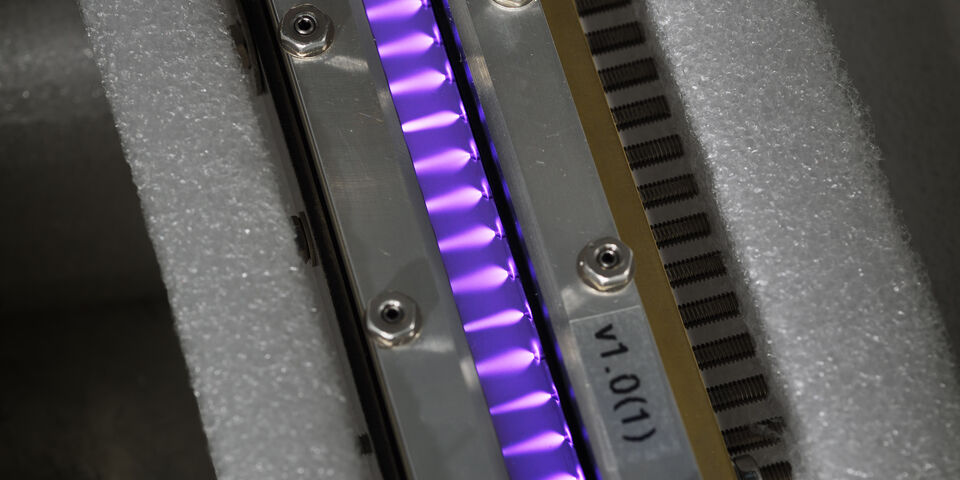Portable plasma to fight ostomy scents
When a friend told him about his experience with his ostomy, plasma expert Job Beckers got the idea to make a portable plasma filter to rid stoma bags from unpleasant scents. Under the name of Plasma Pendix he intends to elaborate this idea within a year to a commercial product.
Beckers says how a friend told him at a party that he had to leave earlier because his ostomy pouch began to ‘balloon’. “Then I had no idea what he was talking about, but it appears to be a problem which more than half of the people with ostomies experience regularly. The carbon filters of stoma bags get clogged up, causing the bag to bulge. When the pressure gets too high, the bag may start to leak, and when you are at a party this amounts to a disaster.”
In the Netherlands there are more than thirty-thousand people with stomas: a hole in the wall of the abdomen through which partially digested food can leave the body if due to a disease or surgery a portion of the intestinal system is not functioning anymore. The stoma is connected to a special pouch, in which the ‘feces’ are collected. Digestive gases also end up in such a stoma bag, Beckers explains. “You need to discharge those, but they have a rather pungent odor. For this reason the bags are fitted with carbon filters, which regularly get clogged up.”
The main culprits are sulfurous molecules, notorious for the smell of rotten eggs. Those stench molecules can be simply broken up by a plasma, as Beckers knew. Such a plasma is an ionized gas, which can be created by establishing a high voltage across two electrodes. Thanks to the high electric fields that arise, a current liberates electrons from their atoms, so that you get a mixture of negatively charged electrons and positive ions.
By making the gas flow along a series of such plasmas, you can selectively render the sulfurous molecules harmless. “In the lab that is easy to do”, says the Assistant Professor in the Elementary Processes in Gas Discharges group (Department of Applied Physics). “The real challenge is to make a portable device that you can attach to the stoma bag and that can replace the carbon filter.”
Using a subsidy of the Metropole region of Eindhoven, Beckers is now going to develop his idea, together with the Catharina hospital and manufacturer VDL ETG, to turn it into a small device. The plasma physicist is working on a plasma filter the size of a Smartphone, though twice or three times as thick. Small enough to carry in your pocket, yet big enough to contain a battery, the electronic steering and a plasma chamber.
Beckers expects that the plasma will only need to be switched on for about one percent of the time. “If we set the plasma in the right way, so that we can selectively only destroy the sulfurous molecules, then the battery will last much longer than a day. At present we are fine-tuning that. We have had a gas mixture made whose composition corresponds with the gas in the stoma bag, and we vary things such as voltage shape and frequency, power density and the rate of flow of the gas in the plasma. This enables us to find the most effective and efficient plasma geometry and steering. This spring we are launching a beta version which is going to be tested with patients at the Catherina hospital.”
And his friend? He cannot wait. “Every week he is coming up to ask me if we have something yet which he can test.”



Discussion